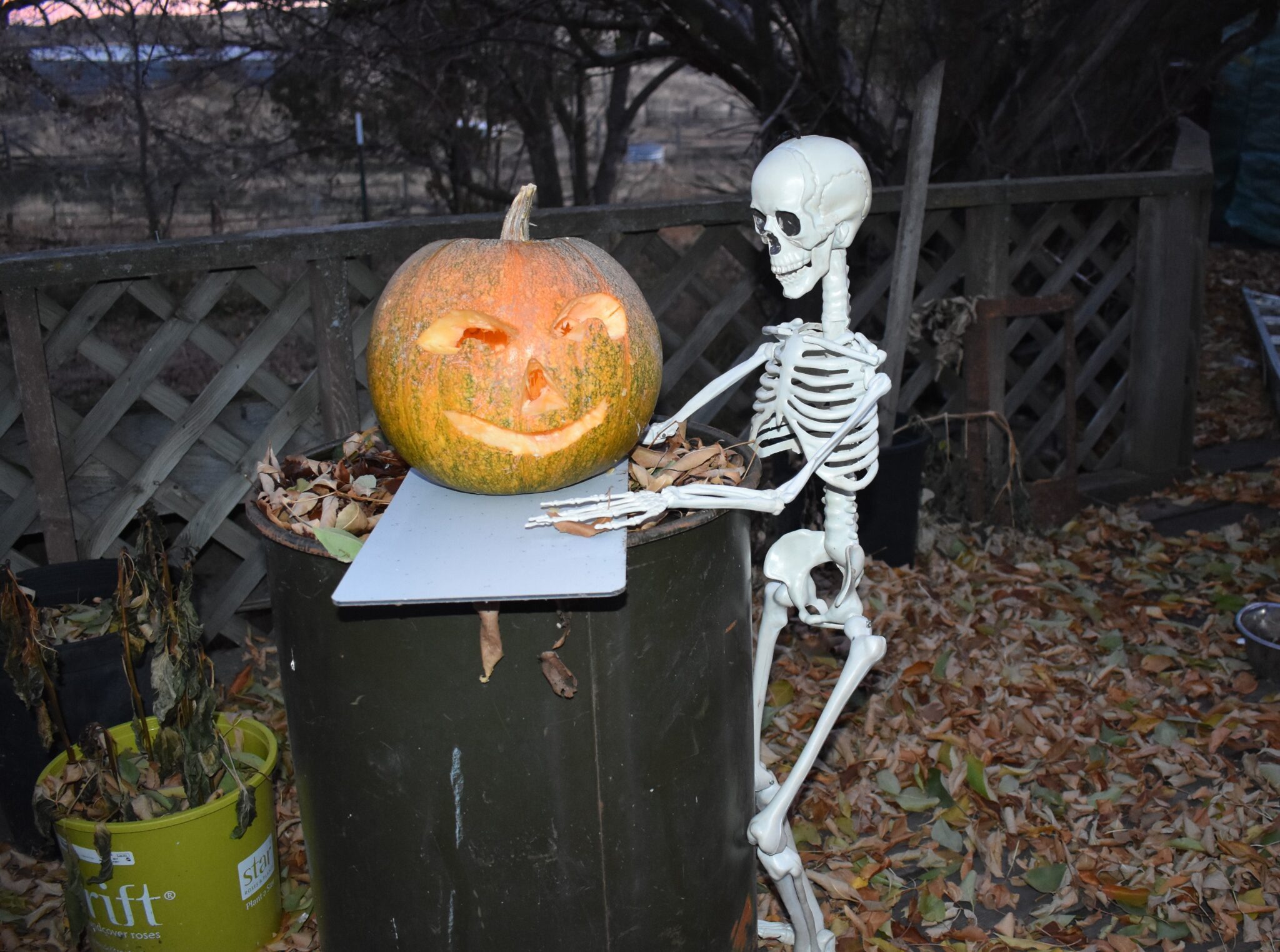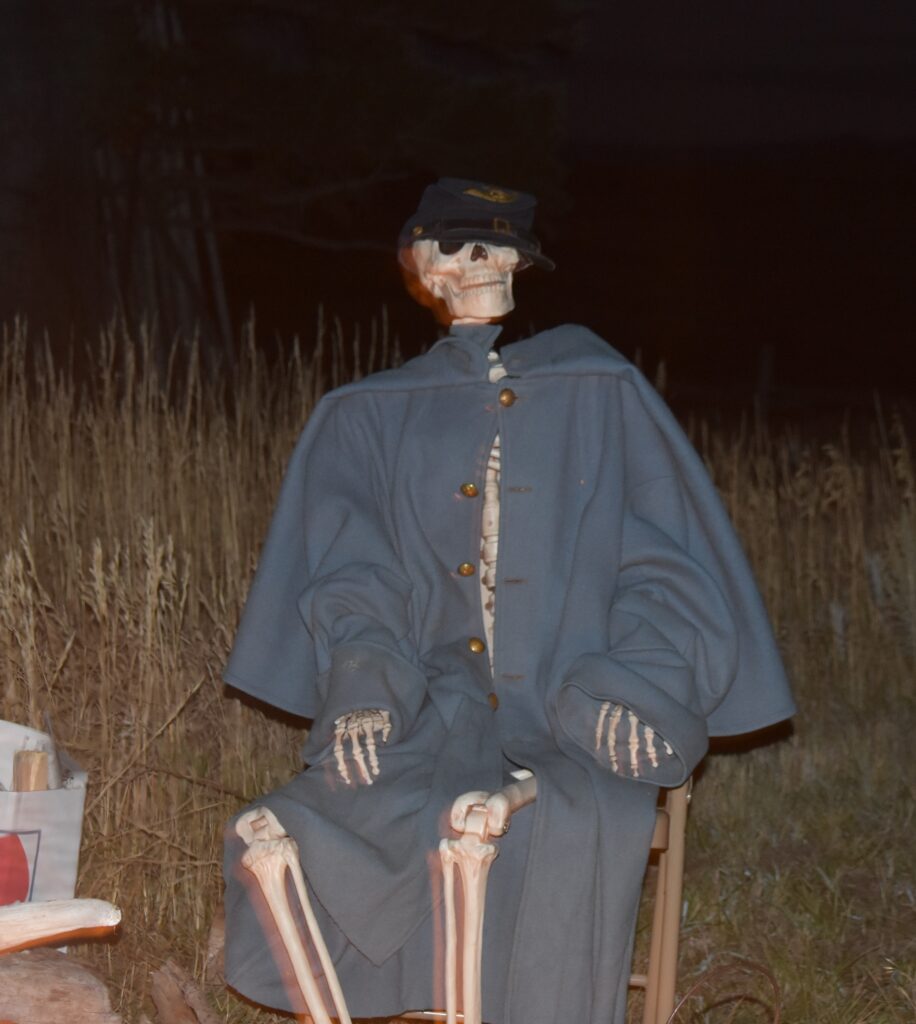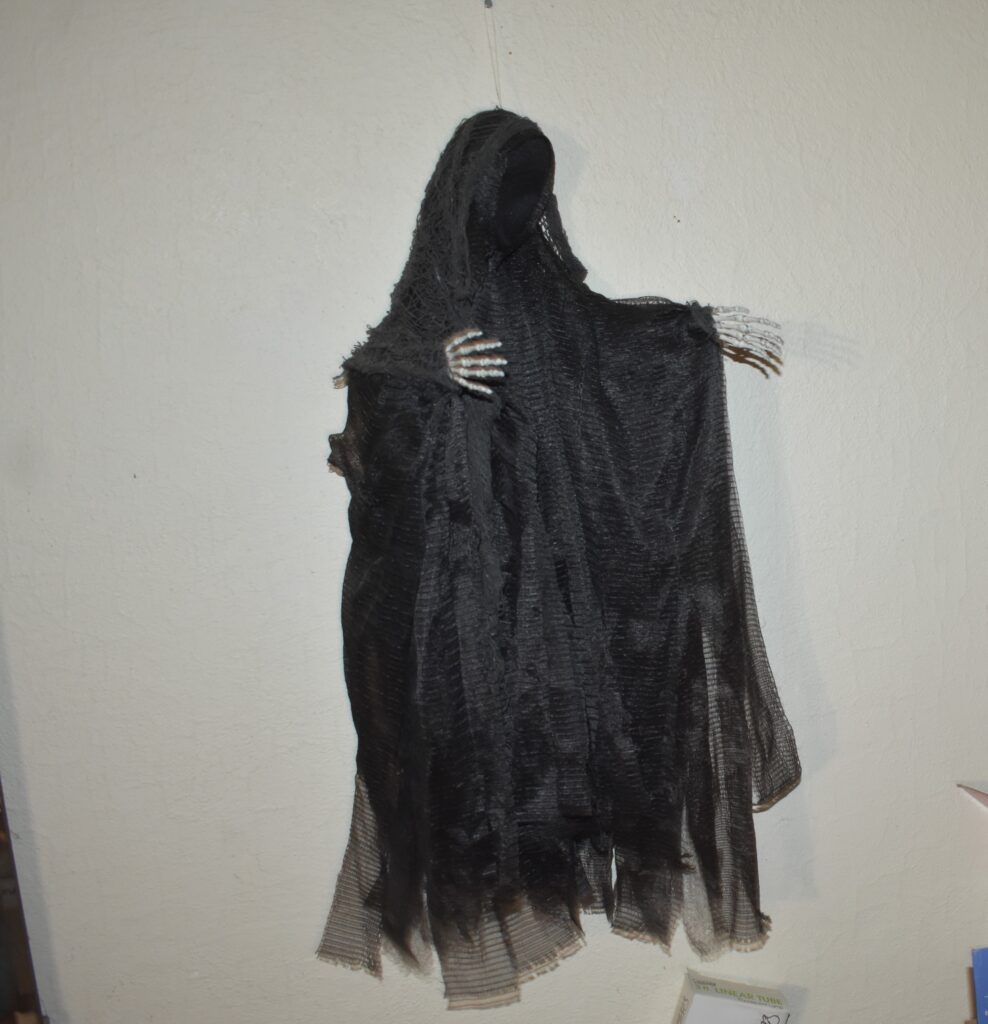News
Halloween in Wyoming’s Past

Today is Halloween, or All Hallows eve. Children and even adults get into the holiday costumes, attend parties, carve artistic jack-o-lanterns and go house to house for Trick or Treat. Here are some of the Holidays origins and superstitions.
Halloween has been celebrated in Wyoming since before we became a state. Some of the earliest references in the old newspapers was this one from the Cheyenne Daily Sun newspaper, which first published in 1867.

This story was in the November 1, 1877 issue – Halloween. Last night was Halloween. It is the name popularly given to the eve or vigil of All Hallows or All Saints, which being the first of November. Halloween is the evening of the 3Ist of October.
In former times the invasion was one of much merriment and innocent amusement. In England it was customary to crack nuts, dive for apples in a tub of water, etc. In other localities, particularly in Scotland, the ceremonies were of a more superstitious character, among the rustics at least, most frequently taking the form of a charm to discover who should be his other partner for life.
Of late years the observance of Halloween has taken a more mischievous and annoying turn. Like St. Valentine’s Day, it is rapidly growing into disfavor.
Which, of course, was not very accurate, as both are still celebrated today, nearly 150 years later.
And this from The Weekly Boomerang, November 8, 1883 – Wednesday night was Halloween, and as usual the boys, in accordance with the old-time custom celebrated the event by playing numerous pranks about the city, such as stealing gates, changing signs, ringing doorbells, hauling away wagons, removing various things from their accustomed places to other locations, and doing other capers, all of which made more or less confusion when discovered. Many persons took the precaution of unhinging their gates and putting them in places of safety until the sport was over.

During the 50s and 60s in rural areas, it was considered the best Halloween joke of all to either tip over or steal a person’s outhouse. The homeowner was not impressed.
The article continues…Many were the curious ceremonies once widely observed throughout Great Britain on the night of the 31st of October, or All Hallow’s Eve. While most of them have fallen into disuse, some are practiced at the present day, particularly in Scotland, and of the ancient superstition there still lingers enough to invest the night with something of a weird, supernatural character. It is then that fairies of all sorts, and especially those elves and goblins bent on mischief, are unusually active, and hold, as it were, a yearly jubilee.
Even humanity itself is supposed on this night to be capable of assuming a spiritual form, and of appearing as an apparition in places quite remote from its bodily habitation. Children born on Halloween are believed to be endowed with the mysterious power of perceiving and communicating with supernatural beings.

At one time Halloween seemed similar to Valentines Day, a day to psychically discover your future spouse, as we see in this story in the
Wyoming Stockman-Farmer, October 1, 1920 – October 31— or all Hallows Eve is the vigil of Hallowmas of All Saints’ Day and was celebrated long before Christianity was known to the world. The lighting of bonfires and the belief that all through that night ghosts and witches were likely to walk abroad were the chief characteristics of the day. The evening one of mystery and supernatural things are expected, especially by the young-folk.
Halloween, which is always on Oct. 31, falls mid-point between the fall equinox, Sept. 22, and the winter solstice, Dec. 21. Halloween got its spooky aspect because the Celt’s believed that at Halloween the doorway between the spirit world and the physical world would open and ghost and spirits could cross to harass the living.
The article continues, The Druids always celebrated about the first of November and lighted bonfires in honor of the Sungod in thanksgiving for the harvest and some of the characteristics of the Roman festival in honor of Pomona, were added to the Druidic festivities. In the Roman festival, nuts and apples representing the winter store of fruits played an important part.
Thus the roasting of nuts and the sport known as “apple ducking,” were once the universal occupation of the young folk in medieval England and are still quite popular. Too, the Druids believed that on the eve of their celebration, Saman, lord of death, called together the wicked souls that within the past twelve months had been condemned to inhabit the bodies of animals. The black cat which is so prominent in Hallowe’en celebrations, is a proof of that.
But what was once a serious rite, has now become an autumn festival of sport and jollity in which imaginary fairies and elves bring fortunes to the young persons who try out the numerous customs which they have learned, or new schemes which they have invented. The custom of lighting Hallowe’en fires survived until recent years in the highlands of Scotland and Wales. It is now a custom in Ireland, when the young women would know if their lovers are faithful, to put three nuts upon the bars of the grate, naming the nuts after the lovers.
If a nut cracks or jumps, the lover will prove unfaithful; if it begins to blaze or burn, he has a regard for the person making the trial. If the nuts named after the girl and her lover burn together, they will be married. Nuts are supposed to possess great prophetic power, and next to them m importance are apples. Any maiden may learn at least the first letter of her future husband’s name by peeling a pippin, taking the paring by one end in her fingers, swinging it slowly three times round her head, saying, as she does so: ”Paring, paring, show to me, husband mine that is to be.” and then letting the paring drop behind her. Let her look at it over her left shoulder, and she will surely see that the paring has fallen in the shape of the initial of his name, though to the rest of the company any semblance of a letter may be wholly indiscernible.

Other weird tests are often tried by love-lorn boys and maidens, who employ candles and looking glasses, a ball of blue yarn thrown out of the window at midnight, placing a shirt sleeve in a brook running south, etc. A revival of many of these old customs would furnish great amusement to our young people and would keep them out of mischief. Tho idea of ghosts and spooks doing great damage, such as tearing up sidewalks, breaking windows, and stealing property is ridiculous. Ghosts and goblins may play pranks which may prove funny and mirth-provoking ‘but no ghosts or goblin has ever been seen doing things as earthly as knocking down fences, tearing up flowers and bushes, or stealing property.
Boys and girl— see if you can be a goblin— throw a shiver or a chill into your victims— — be original and above all be ghostly!
This article about Halloween appeared in the The Sheridan Post, October 30, 1921 – Goblins’ Night – Hallowe’en customs date back into remote antiquity. They are all that we have left to remind us that our ancestors believed in goblins., banshees, ghouls and other evil spirits that were supposed to roam the earth in the darkness of night.
In the early days of the Christian church, the first of November was set aside as All Saints’ Day, it being impossible to observe a separate day for each saint. The night preceding All Saints’ Day was known as Hallowe’en. It was a fearful night, during which the evil spirits were believed to burst from their bonds and haunt the world, having a last fling prior to the sacred day.
The property damages which they were supposed to inflict have been periodically passed on through the centuries and Hallowe’en customs of carrying away gates, tearing down fences and heaping old cabbages and trash on porches of the unpopular.
There was, however, a brighter side to Hallowe’en, as celebrated by the majority of ancient peoples. It marked the end of harvest and the beginning of new terms of farmer tenancy and land-lordship. Renewing his contracts with his tenants, or making arrangements with new ones, it was the Hallowe’en custom of landlords to bring forth the flowing bowl, baskets of red apples and sacks of oats. Landlords have changed.
Wanton destruction of property has made Hallowe’en a night of devils. This year, why not be sensible. Keep evil chained up and observe Hallowe’en in the spirit of All Saints’ Day—by distributing food and clothing to the needy. How about it, Boy Scouts.
Jack-o’-lanterns for Halloween came around 1800. In Scotland and Ireland there was a myth of a man nicknamed “Stingy Jack,” who tricked the devil one night and was condemned to walk the earth with only a carved turnip with a lump of burning coal to light his way. In an attempt to scare away Stingy Jack and other wandering spirits, people began to make lanterns by carving scary faces into vegetable such as pumpkins, lighting them with a candle, and placing them in windows for protection.

Pumpkins aren’t only for Halloween decorations. There are pumpkin carving competitions in many areas, and competitions for the largest pumpkin. In 2021, a grower in Italy had a grew a world record 2,702-pound pumpkin. And, of course, the Thanksgiving staple, pumpkin pie. Coming to Sheridan soon is the annual fall pumpkin festival to be held the first Saturday after Halloween. There will be games such as a pumpkin throwing contest, pumpkin slingshot, and pumpkin smashing.
Used jack-o-lanterns can be set out in the pasture or woods for wildlife to enjoy eating. It is recommended, however, that bleach is not used to make the pumpkin last longer if one wants to set it out for wildlife.
So, whether you decided to dress up in a costume, carve an artistic pumpkin, or pass out candy to the miniature ghosts and goblins, calling out, “Trick or Treat,” have a Happy Halloween everyone.

